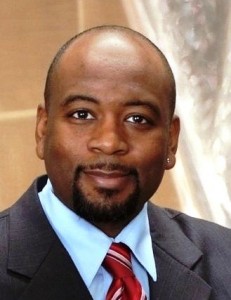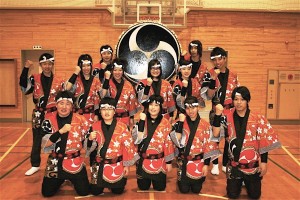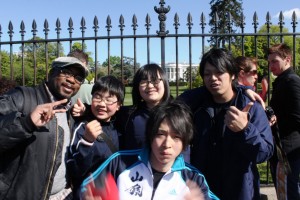JQ Magazine: JQ&A with Darryl Wharton-Rigby on ‘Don Doko Don: The Yamakiya Taiko Drum Club Project’

“This story is about the resiliency of community; how a community comes together in times of crisis. It’s a story about our shared human experience. It’s in some ways my own story, as my family still lives in Fukushima as well.”
By Nichole L. Knight (Shiga-ken, 2007-09) for JQ magazine. Originally from Waterbury, Connecticut, Nichole became active with the JET Alumni Association of New York even before moving to the city. Since returning from Japan, she’s played with the University of Connecticut Taiko Team, and trained with Soh Daiko, the East Coast’s oldest taiko group.
Darryl Wharton-Rigby (Fukushima-ken, 2005-07) is a playwright, poet, professor and filmmaker, who hails from Baltimore, Maryland. He has written for NBC, MTV, and BET. He lectures for Morgan State University’s Screenwriting and Animation Program, and is in the process of writing three books. Married with three children, he splits his time between Baltimore, Los Angeles, and Japan.
From 2005 to 2007, while teaching English in Kawamata-machi in Fukushima Prefecture through the JET Program, Wharton-Rigby was introduced to the talented members of the Yamakiya Taiko Club, a local community group which he would soon join. He began filming their story in 2006, but was inspired to continue after the group was misplaced in the aftermath of the 2011 tsunami and ensuing Fukushima Dai-Ichi Nuclear Power Plant area evacuations.
Of the documentary, now titled Don Doko Don: The Yamakiya Taiko Drum Club Project, Wharton-Rigby says, “…[T]his very well may be my most ambitious project. I never imagined my journey would bring me to [a] project with such an international scope and [is] profoundly personal on so many levels.” As the film’s writer, director and producer, he has unveiled an ambitious Kickstarter campaign to fund the project that closes July 11. In this exclusive interview, JQ caught up with Wharton-Rigby to discuss the origins of the film, the significance of Yamakiya on its devastated community, and the troupe’s international highlights so far.
Tell us a little about the Yamakiya Taiko Club and how you first came to know about it.
When I was a JET in Kawamata, I had to go to the Yamakiya District high in the mountains to teach at the elementary, junior high, and kindergarten schools. I met Megumi Endo, who was a school worker and head of the group at Yamakiya Elementary School. She invited me to play taiko drums with the Yamakiya Taiko Club and I was hooked. I loved the sound and power of the drums. There are three teams: Kodama, the beginning students; Suzaku, the intermediate students; and Yamazaru, the experienced members. I practiced with the younger members of Kodoma.
What inspired you to start making a documentary about them?
I started shooting footage of the group after breaking my finger. I couldn’t play the drums, but I still wanted to remain connected to the group. My background prior to JET was in film, so, I pulled out my camera and started shooting footage of the group. I would shoot rehearsals, performances, meetings, and on bus trips. I even followed around Genki Endo, who is the leader of the group. Megumi-san mentioned that it would be great to have a documentary about the group. I agreed. She came up with the title Don Doko Don—it’s the basic sound of the taiko beat. Over the years, I had compiled more than 80 hours of footage and when I would return to Japan, I would make sure to visit Yamakiya and I would bring along my camera and shoot more footage.
Why is it important to share this story with the world?
When I learned that Yamakiya was going to be evacuated because of high levels of radiation after the events of March 11, 2011, it broke my heart. I could not fathom this was really happening to a community and people I adored. Then I found out that despite the circumstances, the group was still practicing and performing together. I knew there was a story to be told. This story is about the resiliency of community; how a community comes together in times of crisis. It’s a story about our shared human experience. It’s in some ways my own story, as my family still lives in Fukushima as well.
How old is the group? What is the age range of its members, and how long do they tend to stay in the group?
I know the group has been around for more than a decade and comprised mostly of elementary, junior high, and high school students. There are children in the group who are six and seven years old. Many of the members have grown up in the group. A number of students “retire” from the group after high school. There are several older members, like Genki Endo, who is now 23. These members comprise the Yamazaru team.
How often do they practice? Did you still practice with them?
The group practices several times a week after school or for the older members after work. They have a schedule for each team and are still performing around the region. When I was on JET I did practice and performed once with the group. I was nervous but it was a great experience. Now, I just bring my camera and shoot.
What role does the group play in the lives of its members?
Taiko plays an integral part of the students’ lives. I’ve seen several students who were shy when they first started playing taiko become more open. I think the group gives the kids an outlet. Because of the song selections as well as choreography, the group teaches the value of teamwork as well as leadership. Taiko is not about the individual, but how the team comes together and creates a whole sound.
What role does the group play in the community?
The Yamakiya community via the group has a unique identity. Yamakiya Taiko is known for having a strong, powerful, sound from the mountains. They have competed in competitions and sometimes win. Thus, they are a source of pride for their community.
How have those roles changed since the 2011 tsunami and subsequent evacuation of areas surrounding the Fukushima nuclear plant?
I think the evacuation has helped to make the group and the community stronger. Although some members and their families have left Fukushima, many have stayed. Those who have are committed to keeping the spirit of Yamakiya alive.
How did the group’s trip to Washington, D.C. for the centennial of the National Cherry Blossom Festival come about?
The group’s trip came to be when my sempai in Kawamata, Michelle Spezzacatena (Fukushima-ken, 2003-2005) and I got the idea to bring the group to the U.S. for the National Cherry Blossom Festival. Since this was the 100th anniversary, we knew it would be ideal timing to have the group represent Fukushima. Thanks to the efforts of the Japan-America Society of Washington, D.C., the U.S. Japan Council’s TOMODACHI Initiative, American Airlines, and citizens like Shigeko Bork, who is from Kawamata, and a whole host of other people, the trip came to fruition.
 Can you recall any of the students’ more notable reactions to the capitol, performing at the Kennedy Center, homestays, or the trip in general?
Can you recall any of the students’ more notable reactions to the capitol, performing at the Kennedy Center, homestays, or the trip in general?
The ten days of the trip was fascinating. There were many highlights. While in Baltimore, the Yamakiya Taiko Club attended an Orioles game and visited the National Aquarium. The group got to meet dignitaries such as Japanese Ambassador Ichiro Fujisaki and his wife, as well as Ambassador Ester Coopersmith. The Kennedy Center performance had two standing ovations and an encore. They got to meet celebrities such as Jason Jones of The Daily Show and Kristi Yamaguchi. The group did two night homestays with the St. Paul School and the St. Paul School for Girls. Most notable is Itsuki, who is 13 years old and was scared of going on a homestay. In fact, after the first night he was ready to leave. After going back the second night, he said [it was] a blast. When asked about his favorite part of the trip, he said it was the homestay. Another wonderful moment resulting from the trip is that Rika Watanabe mentioned in a news article that when she came to the USA she wanted steak and to meet Johnny Depp. She got the steak during the trip. About two weeks after she returned home, she got an invitation to attend the Tokyo premiere of Dark Shadows, at the request of Mr. Depp. Rika, her best friend Rena, and Megumi-san all traveled to Tokyo and got to meet Johnny Depp as well as Tim Burton.
Are there plans for any future trips either to the United States or elsewhere?
I’ve heard rumor that the group might be going to France for a performance later this summer. A few days ago I learned there’s something in the planning stages for them returning to the USA, but I don’t want to jinx it. Of course we’d love to bring them back again for next year’s Cherry Blossom Festival. They are constantly performing in Fukushima and the surrounding area.
Besides the Kickstarter campaign to raise money for the completion of the project, are there any other ways people can help?
I definitely hope people will support this campaign to help us complete the documentary. We’d like to have a cut ready to submit for the Sundance Film Festival. Please share their story with friends and family and help us get the word out! This is really a special group of young people. The Yamakiya Taiko Club is only one story. There are many others. If you return to Japan and have time, do some volunteer work in one of the recovering communities.
Is there anything else you’d like to share with the JET community?
I was recently in Kawamata and saw that the radiation levels in Yamakiya was about 4.59 miliseiverts. The levels in Kawamata and Fukushima City where many of the kids and their families now live is between 0.2 and 0.6. The town has decided to close both the elementary and jr. high schools. Yamakiya is literally a ghost town. My hope is for the people to return to Yamakiya some day when it is safe. We don’t know if or when that will happen. But, I am certain that as long as long as the community stays together, the sound of the Yamakiya Taiko drums will live and entertain audiences for years to come.
For more information on the Don Doko Don project, click here.



Comments are closed.